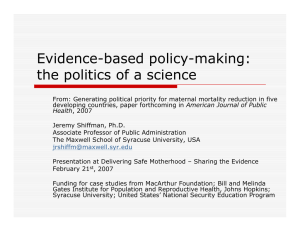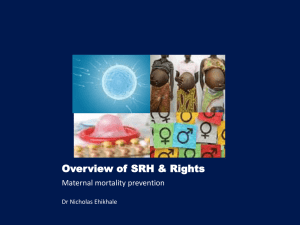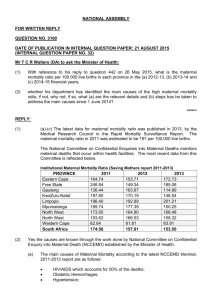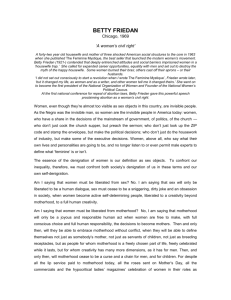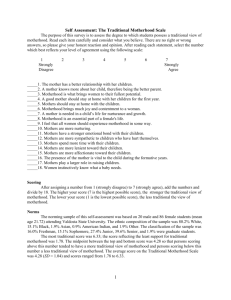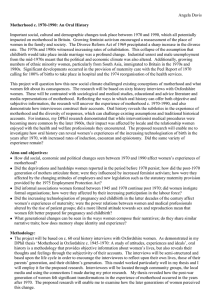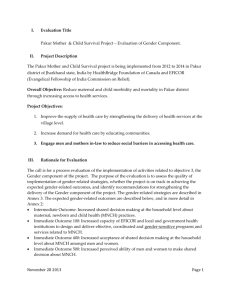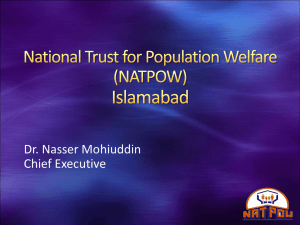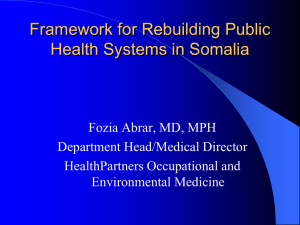Gender-related barriers to safe motherhood (cont.)
advertisement
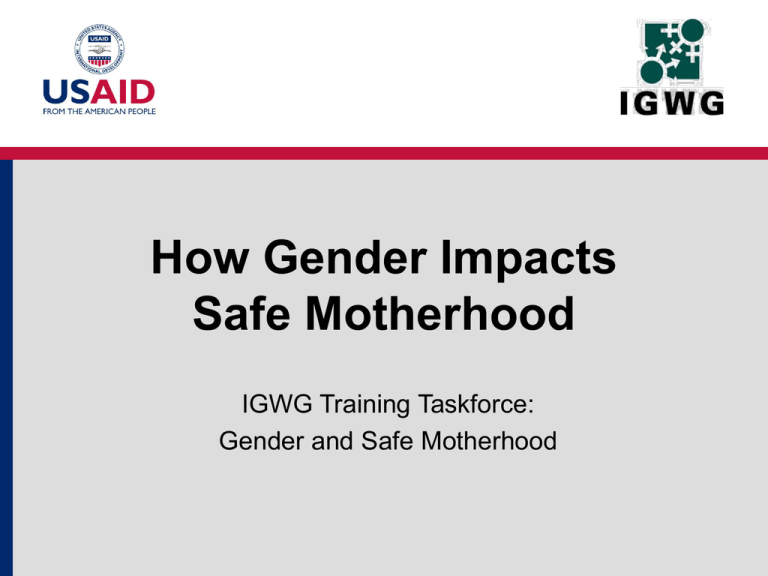
How Gender Impacts Safe Motherhood IGWG Training Taskforce: Gender and Safe Motherhood Safe Motherhood Basics Childbirth: life-threatening risk for women in the developing world • As of 2005, it is estimated that 536,000 women die yearly from causes related to pregnancy and birth. – 99% of those deaths occur in the developing world • Another 10–20 million women every year face severe health problems, such as obstetric fistula. Common causes of maternal death globally Obstructed Labor 8% Infection 8% Other Indirect Causes 25% Other Direct Causes 11% Eclampsia 13% Unsafe Abortion 14% Severe Bleeding 21% The three deadly delays 1. Recognizing signs and deciding to seek care 2. Identifying and reaching a medical facility 3. Receiving adequate and appropriate treatment How can maternal deaths be prevented? Priority interventions include: • Skilled attendance at all births • Emergency obstetric care • Reproductive health and family planning services, including safe abortion Also, greater focus on postnatal care How can maternal deaths be prevented? (cont.) Global estimates indicate that maternal mortality could be reduced… • By 75%, with skilled attendance at all births backed by emergency obstetric care • By 33%, with voluntary family planning • By 13%, with access to safe abortion Who does maternal mortality and morbidity affect? – Women – Children of women who die in childbirth • 2–10 times greater likelihood of death within first two years – Family, community, and country • Decreased economic contributions to household, paid and nonpaid • Psychological and social impact on family, including increased number of children leaving school • US$15 billion estimated cost of maternal mortality Key Gender-Related Barriers Gender-related barriers to safe motherhood – Poor nutrition • Girls • Pregnant women – Early first pregnancy – Early marriage • Pregnancy-related deaths are the leading cause of mortality for 15–19 year-old girls worldwide. Gender-related barriers to safe motherhood (cont.) – Lack of information and education – Restriction of women’s movement outside the home – Gendered division of household labor Gender-related barriers to safe motherhood (cont.) Gender-based violence - Intimate partner violence against women may increase during pregnancy - Female genital cutting Gender-related barriers to safe motherhood (cont.) – Lack of decisionmaking power • Resources for healthcare • How many children to have • Spacing between pregnancies • Use of contraception Gender-related barriers to safe motherhood (cont.) – Exist at many different levels • Individuals • Couples • Families and communities • Health service and other institutions • Policies Safe motherhood related to women’s status • Even though women are honored in all cultures as the givers of life, they are also often dishonored as human beings. • In short, women’s status is a strong predictor of maternal mortality. Thank You!
